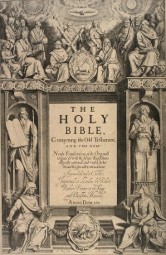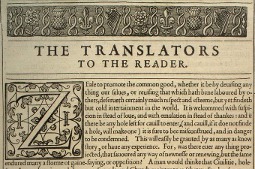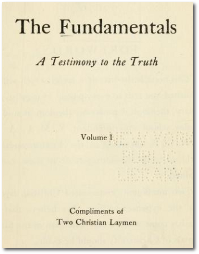The Preface and Opposition to New Translations

In a previous post I noted that the Preface to the 1611 King James Version is an embarrassment to KJV-only advocates because in it the translators of the KJV make a series of statements that argue against the KJV-only position. Since KJV-only proponents insist that only the KJV is the Word of God in English, they are radically opposed to any English translation produced in the last 400 years.
Prior to the KJV, there had been many English translations of Bible: Wycliffe (1382), Tyndale (NT, 1526), Coverdale (1535), Matthew’s Bible (1537), the Great Bible (1539), the Geneva Bible (1560), the Bishops’ Bible (1568), and the Douai-Rheims (1609–10). Since these and other translations were already available in 1611, the translators of the KJV believed there would be hostility to their new translation, and so they were quick to address the issue in the Preface:
Zeal to promote the common good, whether it be by devising anything ourselves, or revising that which hath been laboured by others, deserveth certainly much respect and esteem, but yet findeth but cold entertainment [reception] in the world. It is welcomed with suspicion instead of love, and with emulation instead of thanks: and if there be any hole left for cavil [trivial objection] to enter, (and cavil, if it do not find a hole, will make one) it is sure to be misconstrued, and in danger to be condemned. This will easily be granted by as many as know story [history], or have any experience. For was there ever any thing projected, that savoured any way of newness or renewing, but the same endured many a storm of gainsaying or opposition?
This, and more to this purpose, his Majesty that now reigneth…knew full well, according to the singular wisdom given unto him by God, and the rare learning and experience that he hath attained unto; namely, that whosoever attempteth any thing for the publick, (specially if it pertain to religion, and to the opening and clearing of the word of God) the same setteth himself upon a stage to be glouted [frowned] upon by every evil eye; yea, he casteth himself headlong upon pikes [spears], to be gored by every sharp tongue. For he that meddleth with men’s religion in any part meddleth with their custom, nay, with their freehold [an estate or office held for life]; and though they find no content in that which they have, yet they cannot abide to hear of altering.
Many men’s mouths have been open a good while (and yet are not stopped) with speeches about the translation so long in hand, or rather perusals of translations made before: and ask what may be the reason, what the necessity, of the employment. Hath the Church been deceived, say they, all this while?…Was their translation good before? Why do they now mend it? Was it not good? Why then was it obtruded [thrust upon] to the people?
 Republished with permission from
Republished with permission from  The Fundamentals was a series of articles first published between 1910 and 1915 as the fulfillment of an oil millionaire’s (Marsden, 118) dream. He didn’t dream of becoming a Christian publishing magnate. Rather, Lyman Stewart aimed to fortify Christian leaders in the fundamentals of the faith against the tide of unbelief—specifically the unbelief of higher criticism.
The Fundamentals was a series of articles first published between 1910 and 1915 as the fulfillment of an oil millionaire’s (Marsden, 118) dream. He didn’t dream of becoming a Christian publishing magnate. Rather, Lyman Stewart aimed to fortify Christian leaders in the fundamentals of the faith against the tide of unbelief—specifically the unbelief of higher criticism.
Discussion